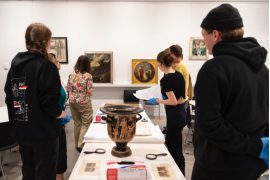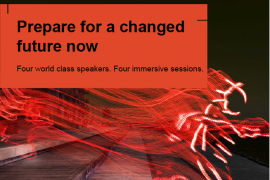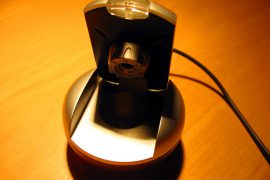As I’m currently enrolled in a fully online MSc programme, I thought I’d share some honest observations about my experience of being assessed in a fully online course, and how it could be improved.
The unit I’m currently taking is assessed on two components – a blog (60%) and a final assignment (40%). The blog is assessed on a number of criteria:
- Reflection
- Regularity
- Knowledge and understanding
- Communication style and multimodality
Postings on the blog are based on weekly readings and other activities such as group discussions, synchronous chat sessions, and contentious questions.
The power of feedback on summative activities
Throughout the course we have received regular formative feedback from our blog tutor. The feedback is dialogic in nature and highly personalised. Because the blog is assessed, there’s a strong extrinsic motivation to engage with it regularly and to ensure it’s conforming to the assessment criteria. In addition to the global assessment at the end of the unit, there are two formally-assessed blog posts at week 3 and week 7 which provide excellent opportunities for feedback relating to criticality and the academic writing style of posts. Having these mini assessments early on in the unit and towards the end was really helpful. If the only formal assessment with feedback had been at the end of the course, there would have been little point in it, as it would have been too late.
In a previous teaching role, when I was teaching academic writing skills for postgraduate students, the main assessment tool was a 3000 word research essay due in the final week of the course. There was a small assessment task worth 10% at week 4, which required students to draft an abstract based on a paper they were using as an exemplar, and a 15% oral presentation on their research. However, there was no formative (or summative) activity to scaffold their final written assessment. Initially, I introduced a voluntary draft submission period, when students could submit their draft and meet for a feedback session a couple of weeks before the final submission was due. However, because it was voluntary and attracted no marks, few students took this opportunity; in fact only the very motivated students who weren’t struggling submitted a draft. The following term I introduced a participation mark for the draft submission and this lead to an almost 100% uptake in the draft process, and a far better performance in the final assessment. Obviously this is anecdotal and was only one small cohort, but this seems to be in line with research done by Brearley & Cullen (2013) who found that formative feedback helped good students perform even better, but had a limited effect on struggling students. Providing some kind of summative task that will allow useful feedback to scaffold a process therefore seems to be a good idea.
The importance of clear assessment guidelines
Another observation from being a student on this course concerns the parameters of assessment tasks. I found the second assessed blog post quite hard to do, mainly because it was very ‘free’. The instructions were to produce a critical argument on one of the week’s readings using multimodality. I found it difficult to work out how long it should be, given that it was supposed to be created from multimedia such as video, images, and sound. How long is too long? How short is too short? I relished the freedom to experiment with multimedia and make my own decisions as to length, but in fact the lack of guidelines meant I spent way longer on it than on the previous structured post.
This really underlines the importance of clarity in assessment if it’s not to become too onerous. Sambell et al. (1997) argues that lack of ambiguity and openness in assessment are essential for fairness and validity. This observation could also be applied to the final assessment task the unit which is very open to interpretation. On one hand I find that challenging and exciting, but on the other hand it means far more thought and time narrowing down a question and which type of media to use to address it. There seems to be a very fine balance between too much and too little regarding assessment criteria and guidelines. Clear wording and instructions can provide parameters in which to be creative and adventurous, but conversely, too many instructions and boundaries can be stifling.
The other issue with using multimedia in an assessment is that it took me about 5 times as long as it would to write a ‘traditional’ essay. Even though I’m relatively tech-savvy, the process of deciding on the structure of the assessment, choosing the medium (I used narrated images made in iMovie), scripting the narration, editing and finding images that were suitable and conforming to copyright took a long time! It made me realise that using video or other multimedia as a means of assessment is certainly not an ‘easier’ option – the effort and time needed was far greater, at least for me.
Do you have a story you’d like to share about your learning experiences? Contribute to Teaching@Sydney!





